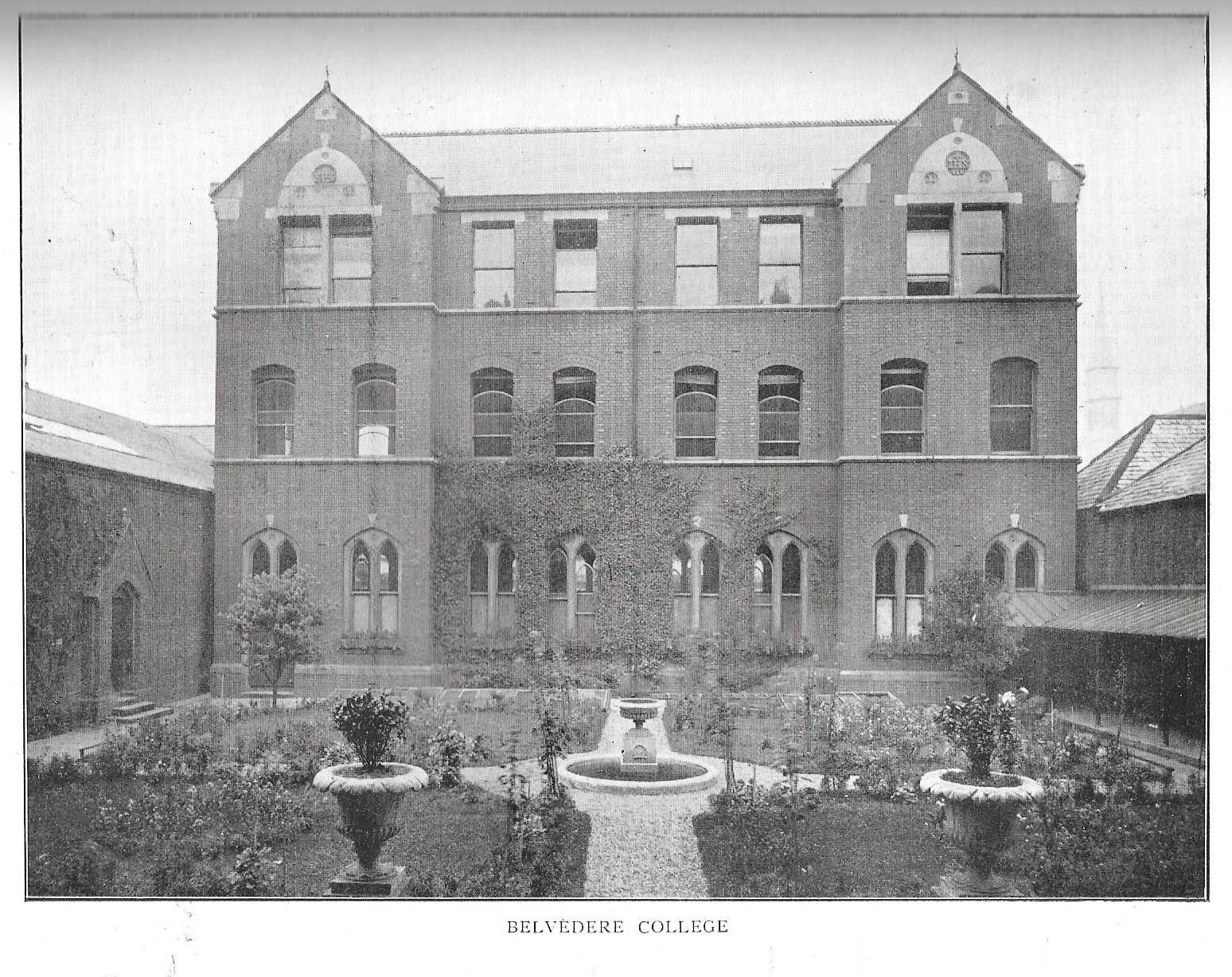Leo Hilliard arrived at Belvedere College in the
school year of 1900-1901, where he joined his elder brother, James. During
their time at the school, the boys lived in Clonsilla.
Leo
received his commission in the cavalry, the 10th Reserve Cavalry, in
October, 1914. During the rebellion in Dublin, Easter week, 1916, Leo was in
the city. The Belvederian of 1916
reported the following:
He was in action in the city
during the rebellion and captured one of the Sinn Fein flags at Marrowbone Lane
Distillery.
The Marrowbone Lane Distillery was an outpost of
the 4th Battalion Irish Volunteers, led by Commandant Éamonn Ceannt
in the South Dublin Union. Ceannt gave command of the distillery men to the
battalion Adjutant Seamus Murphy. On the morning of Wednesday, 27 April, 1916,
the men under Con Colbert in Watkin’s distillery, another nearby outpost,
joined the men at the Marrowbone Lane Distillery. Seamus Kenny later recalled:
Con Colbert’s crowd in Ardee Street distillery had
no food. and were dying with hunger, and they sent word to us would we take
them in and we said yes. They came at about four o’clock that morning.
There was continuous firing from the Irish
Volunteers at Marrowbone Lane almost as soon as it was taken on the Monday
morning. Kenny reported that the ‘fighting
started right from the minute we went in and it continued through the whole
week.’ The 3rd Royal Irish Regiment suffered particular losses as
they advanced along the canal, receiving fire from the distillery garrison. Thomas J. Doyle’s witness statement to the BMH reported that
[t]here
was a good deal of shooting done from Marrowbone Lane to the canal bank. There
was a group of our men posted along to cover the back.
Although
there seemed to be a mass of British Army soldiers in the Cork Street area
midweek, they ‘were not so plentiful this [Friday] morning’. On Friday
afternoon, ‘[i]t became evident by their movement that we were going to be
routed if possible.’ At Marrowbone Lane Distillery the weekend was
relatively quiet; only occasional sniping occurred. Throughout the week, the
garrison never left their positions or ventured outside the distillery. The
policy that the British Army took was to contain the garrison and bypass them.
After dusk on Monday, 24 April, 1916, two hundred
men of the 10th Reserve Cavalry Regiment attacked the City Hall
position of the Irish Citizen Army under Sean Connolly. This first wave of
attack was repelled but the rebel position at City Hall was abandoned that
night. As it was Hilliard’s cavalry unit involved in the first attack, it is
possible that he was part of the charge.
Following the rising, Leo was stationed at the
Curragh, County Kildare. In The
Belvederian of 1917 it was reported that Leo was on the move again; he was
‘as we write’ en route to India.
Leo’s elder brother, James, attended Belvedere for the
years 1895-1903. In 1908, James qualified
as Veterinary Surgeon and became an officer in the Royal Veterinary Corps. For
the years 1910-1914 he served in India, where he also had a very successful
horse-racing career.
He
was still in India when the Great War began, but returned to Europe and was in
service in France from at least 1916 and continued in 1917. The Belvederian of 1916 & 1917 reported
his location and addressed him as Captain J. Hilliard R.A.V.C. (Royal Army
Veterinary Corps).
By
1926, The Belvederian could report
that James Hilliard had been promoted to Major but had also retired in 1921.
After the war, he returned to India and took up position as Veterinary Surgeon
to the Royal Calcutta Turf Club. He was ‘a tremendous favourite,’ they told
their readers, ‘just as he was in Belvedere.’
Whilst
in Ireland in 1936, Major James Hilliard paid a visit to Belvedere. The Belvederian reported:
A
few weeks ago we had the pleasure of meeting Major J. Hilliard, RAVC (retired),
when he came back to visit the old school-rooms which he had not seen since he
left Belvedere, thirty-three years ago.
James gave updates on his career and whereabouts
since he left the school (over thirty ago at that point). Unfortunately, The Belvederian of 1936 did not record
James saying anything about his younger brother, Leo.
